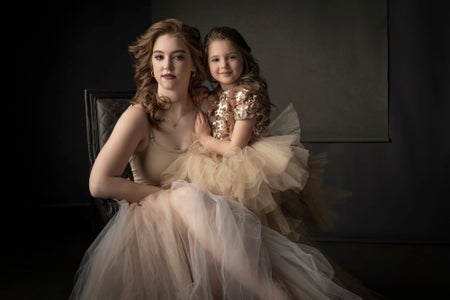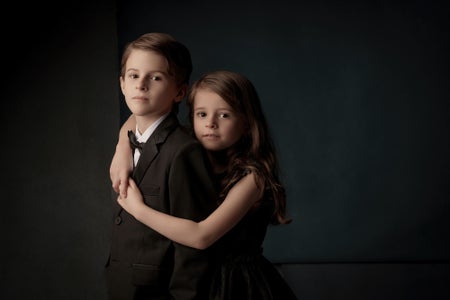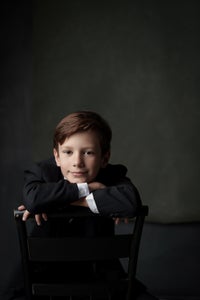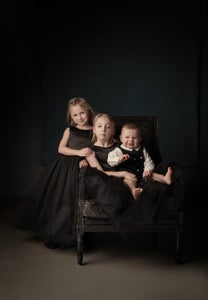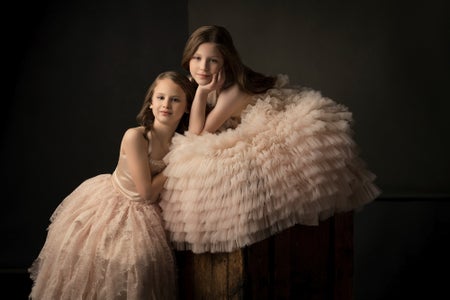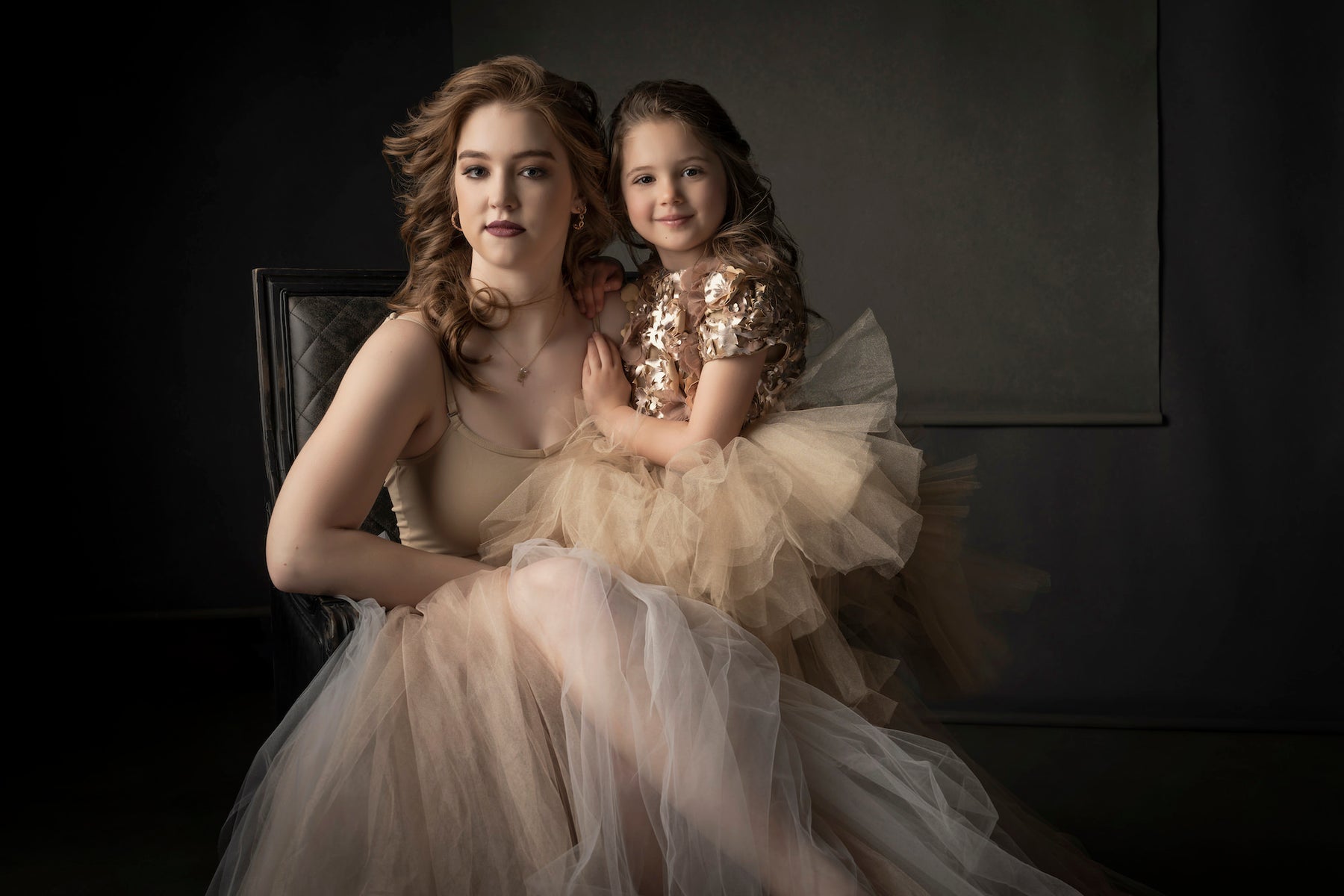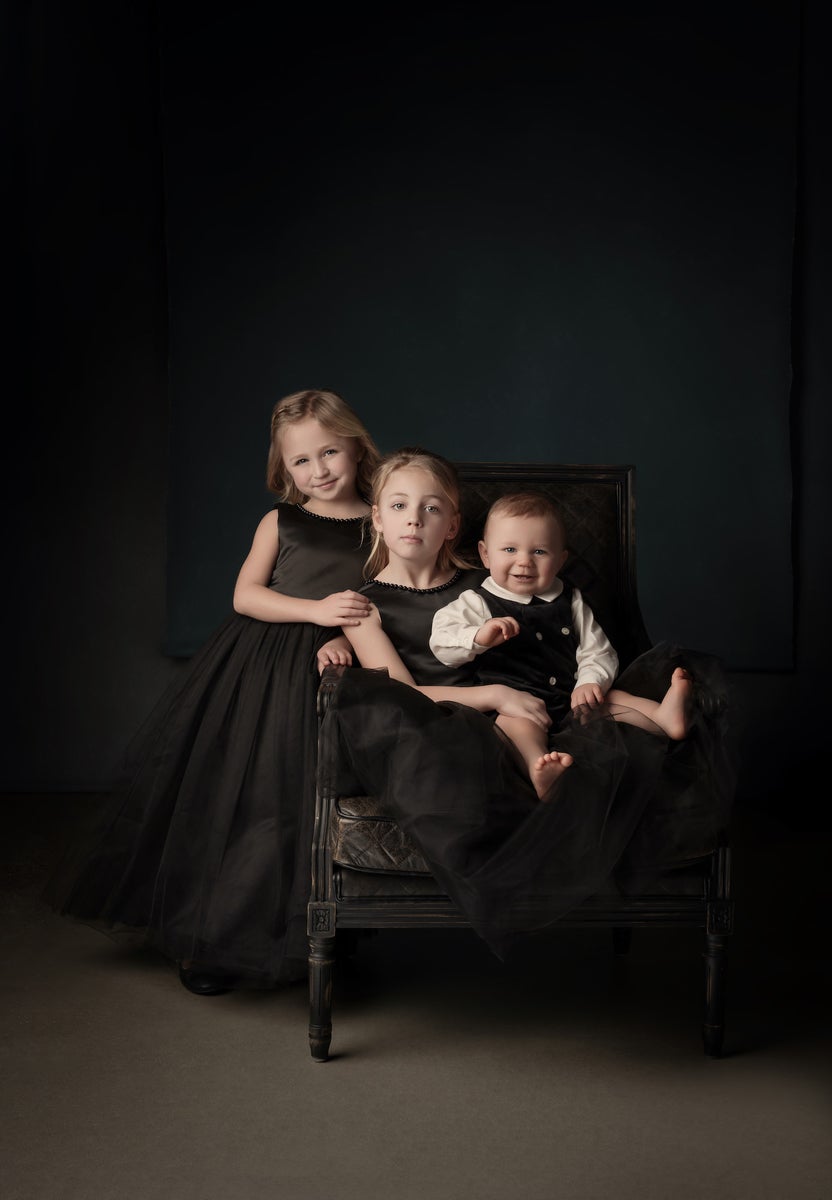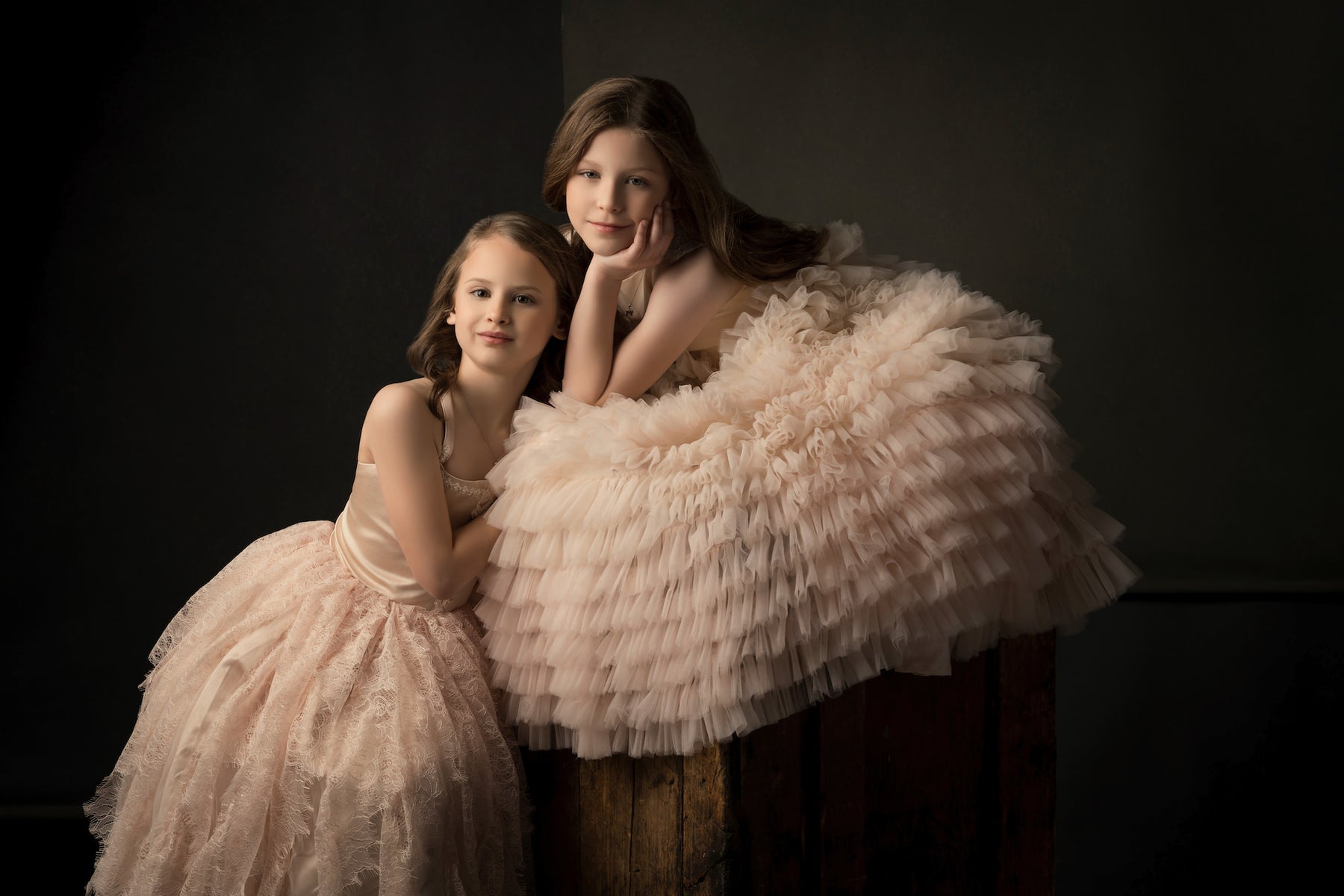The art of portraiture requires many skills, even beyond what you might expect. Obviously there are the technical skills, but a portrait photographer must also excel at communicating with their subject, making them comfortable and helping them pose. Mastering these to create a signature style in your portraiture can help separate you from the masses. We sat down with professional portrait photographer and Sony Artisan Monica Sigmon (@monicasigmon) to soak in some of her advice for portrait photography. Sigmon selects everything carefully – from the gear, which includes the ultra-high-resolution Sony Alpha 7R V and Sony 24-70mm f/2.8 G Master II, to the way she communicates, to the set arrangement – everything is optimized to create her signature formal portraits.
Sigmon’s formal portrait line is branded as Black Label, a term she explains has been used for years to describe the highest level of luxury a brand could offer. With the same philosophy behind her portrait line, she describes her work as inspired by classic artists like John Singer Sargent, as well as today’s most innovative photographers like Vanity Fair’s Mark Seliger and Annie Leibovitz. Sigmon and her studio, Sigmon Taylor Photography have become very well-known for making portraits that serve as true statement pieces. Keep reading to learn her top pieces of advice for creating iconic, formal portraiture that will stand the test of time.
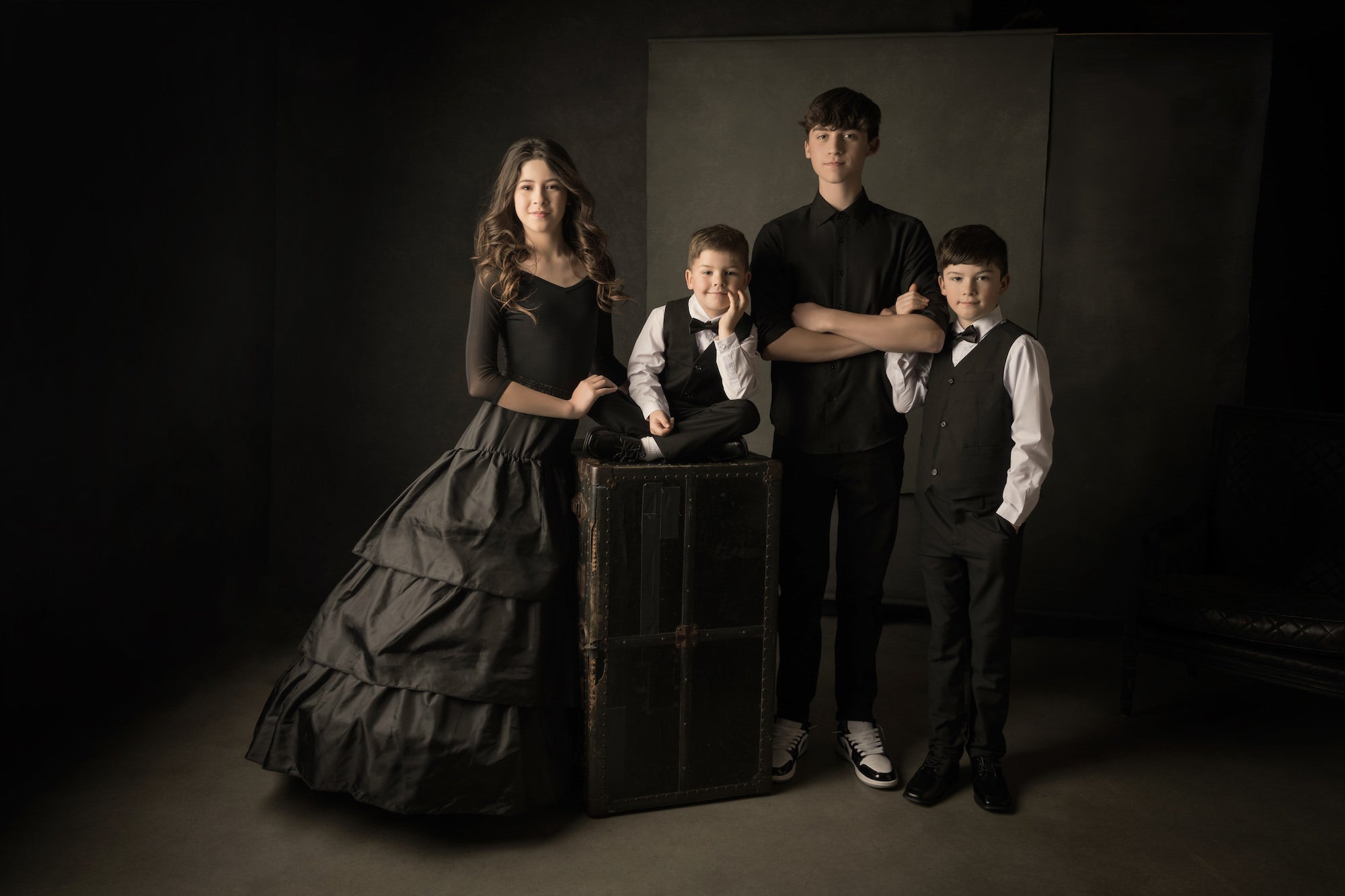
Photo by Monica Sigmon. Sony Alpha 7R V. Sony 24-70mm f/2.8 G Master II. 1/160-sec., f/8, ISO 160
We sat down with a high-end portrait studio photographer to learn how she creates her signature ‘Black Label’ portraits of images that are a cut above the rest.
Create A Relaxing Environment
One question Sigmon gets time and time again is how she interacts with clients to make them feel comfortable while photographing them. Sigmon stated that she thinks most photographers are shy and typically introverts, that’s why they gravitate to being behind the camera. So when photographers are nervous with clients, they will sometimes hide behind their camera. “We have to make a concerted effort to stop thinking about ourselves and start thinking about the people in front of us,” she says. “And you can't think about both at the same time, so photographers get in their heads and they're worried, or maybe they’re a newer photographer and they feel insecure and have imposter syndrome and all those things. So you're just kind of hiding back there, but the reality of it is that the subjects are not thinking about you, they're worried about themselves. So your job is to just make them feel amazing.”
Sigmon goes on to explain that if you get too in your head and can’t get out of the nervousness, then you should just start chatting with the clients. You can ask them about their weekends, upcoming trips, or about their children, anything that gets you and them more comfortable and relaxed. “What photographer’s don’t realize is that every second of quiet is super uncomfortable for the client, and then the clients think they’re the ones doing something wrong. As photographers, we have to come out behind that camera and really build that relationship so that they feel great.”

Photo by Monica Sigmon. Sony Alpha 7R V. Sony 24-70mm f/2.8 G Master II. 1/160-sec., f/8, ISO 160
At her studio, Sigmon Taylor Photography, they require every client to have a meeting before their shoot – what they call a design consultation. This allows her to set expectations of what the shoot will look like, how many images they can expect and what the client is hoping to receive. Sigmon also loves these consults as it helps build a rapport with the clients. “The more time you can spend with them in advance, the more comfortable they'll feel, the more confident they'll feel in your skill set. Then you have more freedom to create when you're with them on set.”
Allow The Subjects To Act Natural
In addition to how to interact with the clients, Sigmon is frequently asked how she achieves such natural expressions and poses. For their Black Label line, Sigmon Taylor Photography draws inspiration from classical paintings such as those by John Singer Sargent. These paintings do not showcase big toothy smiles, but instead the subjects typically have a soft, closed mouth expression. This is one of the expectations set in the design consultation. Sigmon tells the clients that they aren’t looking for the wide, full on smiles. Sigmon will ask questions of the subjects and in a split second they may hit the perfect expression, and that’s the exact moment she makes these images. She will also model the level of energy for the clients. “They're going to mimic that energy,” she says. “The louder they get the more quiet I get and then eventually they come down to match my energy and that feeling, and it takes practice.”
Sigmon is also always looking for natural looking poses. One trick she uses is telling the client to go stand in a certain spot while she checks her camera settings. She uses this as a ploy to observe her clients and how they naturally hold themselves. This becomes the basis of the posing and Sigmon will go on to finesse it, making sure they’re turned the right way toward the light and in a flattering pose. But she always starts with what feels right to the subject. “Even though it looks relaxed and candid, everything is super intentional.”

Photo by Monica Sigmon. Sony Alpha 7R V. Sony 24-70mm f/2.8 G Master II. 1/160-sec., f/8, ISO 160
Use Gear That Elevates The Work
Sigmon’s Black Label style of photography was one of the driving forces to her switching to Sony. She was gravitating toward this dark, muted look with moody lighting, dark backgrounds and the subjects wearing darker clothing. “What I found was that I wasn't getting any low end detail and so it was very problematic,” she explains. “I thought I was trying to create something that wasn’t creatable, but then a friend of mine recommended that I try the Sony mirrorless system. At the time it was the Sony Alpha 7R II, and I used it to photograph a black dog on a black chair against a dark, gray wall by window light on a cloudy day. I picked up the camera that I owned and shot, and then I picked up the Sony and I shot it. I brought the files onto the computer and looked at the files, and I always say, the proof is in the file. The low end detail was all there and it was just revolutionary. I am not exaggerating when I say that if it weren't for Sony, we wouldn't have this formal portrait line.”
“I am not exaggerating when I say that if it weren't for Sony, we wouldn't have this formal portrait line.” – Professional portrait photographer Monica Sigmon
Now, Sigmon uses the Sony Alpha 7R V camera. “It just makes it a joy to photograph. It's so fun and so fast and so easy and so intuitive. Really what I find is that it just frees us up to concentrate on the subjects in front of us, concentrate on the image that we're trying to create and not worry about any of the technical details.”
Along with the Sony Alpha 7R V, Sigmon’s go-to, workhorse lens is the Sony 24-70mm f/2.8 G Master II. “That surprises a lot of people because as portrait photographers we are always used to hearing the 70-200mm,” Sigmon says, “but for this formal portrait line, what we sell the most of are our full-length portraits. That is partly because it's an option they really don't see often when they have been photographed before. So with that 24-70mm, on a camera stand, I can very quickly roll in and out, up and down. This just enables me to not have to stop the rhythm of the shoot. And that’s a really, really powerful thing. Plus, it’s a really powerful tool, the compression is beautiful and it’s just a strong go-to lens for me.”

Photo by Monica Sigmon. Sony Alpha 7R V. Sony 24-70mm f/2.8 G Master II. 1/125-sec., f/9, ISO 160
Sigmon’s other favorite lenses include the Sony 85mm f/1.4 G Master and the Sony 135mm f/1.8 G Master. “Those are absolutely stunning portrait lenses. Everything looks so yummy and painterly.”
In terms of lighting, Sigmon’s studio setup is always the same to help achieve consistency across the line. She uses the 72-inch Octabox as her primary light source. “For our Black Label line we really need it to be consistent. We want these portraits to stand out, so that when you're scrolling through Instagram, you know that it's one of ours because you recognize the lighting pattern. For me, that lighting pattern is cinematic, it's dramatic, it's unexpected, it's not what people are used to seeing unless you look back, historically at these classic painters.”
As we mentioned earlier, everything on set and throughout the portrait process is designed for success. Sigmon has honed these techniques over years of practice and hard work. You can see more of Sigmon’s work on her Instagram (@monicasigmon) or website. And if you’d like to continue learning from her, check out her educational website which includes everything from free resources to coaching to in person workshops. And to chat with the community about all things portraiture, join us in the Sony Community Forums!
